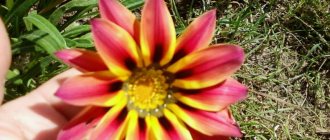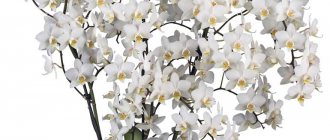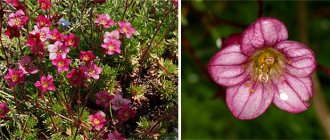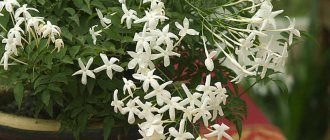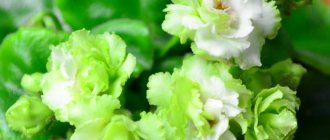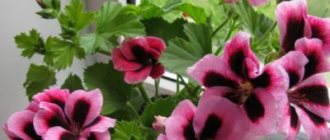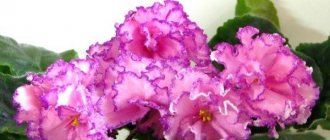Monarda (Monarda, garden bergamot) belongs to the Lamiaceae family. Lives in North America. Named in honor of N. Monardes, who published a popular science book in 1574 describing new representatives of the flora found in this country. The genus includes 22 species. The flower also has a second name, known to everyone - bergamot. It is grown as a garden crop in Russia. Used in landscape design, alternative methods of treatment, cosmetology, for preparing dishes and drinks.
Characteristics of the monarda
There are more than 20 varieties of monarda. Almost every species can be grown in the garden. Popular varieties of ornamental crops:
- Lemon or citrus monarda. The height of the annual is 15-95 cm. The leaf blades are lanceolate. The inflorescence consists of 5-7 whorls with small lilac flowers. The flower can be used as an ornamental or spicy plant.
- Lambada. The hybrid was developed by Dutch scientists. A pronounced lemon aroma emanates from the leaf blades of the plant.
- Spot monarda (horsemint). It is distinguished by the amazingly bright colors of its leaf blades, which are painted in salmon shades. The height of the plant reaches 80 cm.
- Double monarda. A perennial that grows up to 75-80 cm. It has a horizontally growing rhizome. Stems are tetrahedral. The green leaf blades are pointed at the tip and pubescent. Foliage length is up to 12 cm. The color of the stipules is red. Inflorescences are lilac or purple.
Lemon perennial variety
- Fillet monarda. In Europe it is grown as a spice. The height of the stems is 65-120 cm. The foliage is pubescent with thin hairs. The flowers look like tubes and are colored lilac. The inflorescences are spherical, 5-7 cm in diameter.
- Hybrid monarda (monarda hybrida). Combines various varieties, bred in Germany from Monarda double and fistula. The height of the bushes is 100 cm. The inflorescences are painted in violet-purple (Mona Lisa variety), red, white, pink (Pink Lace), burgundy or lavender tones. Popular varieties: Red Monarda, Monarda Bee Pue and Monarda Cambridge Scarlet. Monarda Terry Fairy Tale, Gadenvie Scarlet and Spice look no less impressive.
- Monarda Fireball. A perennial herbaceous plant grows up to 75-80 cm in height. The rhizome of the variety grows horizontally. Inflorescences are burgundy.
Botanical certificate with photo
Monarda is a bright flowering annual or perennial, a member of the Lamiaceae (Lamiaceae) family. The plant is native to North America, where it is still often found growing wild. It is a rhizomatous decorative flowering crop up to 1.2 m high. The leaves are oblong, with a crenate or serrated edge, lanceolate in shape, very fragrant. The shoots are weakly branched and erect. The inflorescences have a racemose or capitate type and an original “shaggy” appearance, consisting of small fragrant two-lipped flowers. The colors of the “phlox” range are white, pink, lilac, purple-red, violet. There are also yellow varieties and hybrids. Several inflorescences can be located on one shoot, one above the other. The seed capsule is a nut. Seed germination lasts up to 3 years.
Other names for monarda are bergamot, golden lemon balm, lemon or Indian nettle.
Monarda: planting and care in open ground
Kufeya - planting and care in the open ground and at home
At home, the crop can be grown from seed material, or by planting pre-purchased seedlings in the ground.
Planting seeds
The timing of planting seed material in open ground depends on the region where monarda is grown. In southern countries this is done in early spring, and in colder countries - in mid-May. Procedure:
- Select a suitable area, dig and loosen the soil.
- Plant the seeds in the dug grooves.
- Sprinkle them with a small layer of soil.
- Moisten the soil generously.
- Cover the planting site with a piece of film until shoots emerge.
- Systematically remove the film for 5-10 minutes for ventilation, and moisten the soil as the top layer dries.
Plants grown in this way are transplanted to another place after a year. Flowering should be expected after 12 months.
Planting seedlings
- Having chosen an area for planting flowers, dig up the soil.
- After loosening the soil, dig holes for the seedlings.
- Pour settled rainwater into each hole.
- Place the roots of the seedling in the hole and fill the resulting voids with fertile soil.
- Moisten the soil at the planting site. You can expect abundant flowering this year.
Growing monarda from seeds at home
In areas with warm climatic conditions (for example, in the south of Russia), in the last winter month in clear weather, the seeds are immediately placed in the ground in the garden area:
- If the snow has not melted, clear the area of snowdrifts.
- Cover the soil with film to keep the soil warm.
- Loosen the soil by adding sand.
- Add grains of sand (1 to 4) to the seeds.
- Deepen by 25 mm.
- Sprinkle with sand.
Until April, the seeds will undergo cold stratification. In mid-spring, the first shoots can be observed. Sowing is also done in the fall, after collecting the seed material. But then the seedlings grow very slowly.
Seeds can be sown for seedlings in containers. This is done in the 2nd half of winter so that the shoots get stronger before the growing season:
- Pour vegetable soil mixture into the pots.
- Deepen the planting material by 20-30 mm.
- Place at +20°C.
- Shoots can be seen after 3 weeks.
- After 20 days, transplant 3*3, 4*4.
Watering and loosening the soil
Perennial garden geranium - planting and care in open ground
Monarda needs moderate and fairly frequent watering. During the dry season, the soil is moistened every evening. In April and May, the decorative crop is watered with warm water.
Double variety
After each moistening procedure, it is necessary to loosen the soil. It is important not to damage the root system. Weeds must be removed from the flowerbed so that they do not interfere with the full growth and development of the crop.
Note! To prevent excessive evaporation of moisture from the ground and the growth of weeds, experts recommend mulching the soil.
Further care for the Monarda garden flower
Bee balm grows quickly and does not require much care. It is worth paying a little attention to some of the needs of an ornamental plant.
Watering
Most varieties are quite drought tolerant, but should be provided with regular watering. It is enough to keep the soil moist, but not soggy. Make sure the area you are planting in does not become wet during the winter months and remains well drained.
During the first year, make sure that the soil around the garden Monarda does not dry out.
You might be interested
Decorative liana Ipomoea: cultivation and use in garden design
Red perennials: the best plants to grow in the garden
Perennial shade-loving flowers and plants for the garden: a selection of the best plants
Fertilizers
There are two common methods of feeding Wild Bergamot.
- In the spring, lay down a good layer of compost and cover it with a few centimeters of mulch - this will provide sufficient nutrition for the plants and good protection from weeds.
- Alternatively, you can use liquid organic fertilizer, or a slow-release granular form, dug into the topsoil.
Trimming
In early spring, if you already have established plants, it is useful to stop their growth when they reach about 30 cm in height. To stimulate branching, pinching is necessary. All you have to do is carefully pinch off the tops of each stem. Before flowering, the plant will begin to produce new branches.
If you have a large bed of Bee Balm, you can simply trim the entire area at once using pruning shears. This should prevent your plants from looking lanky.
How to make Monarda produce new flowers? Once the flower has finished blooming, cut the stem to the ground or pinch it off. This will encourage the plant to put up another flowering stem.
In the fall or winter, you should trim the stems of Bee Balm after it dies. Cut them just above the soil surface. This allows the dead plant material to be cleared away and the perennial varieties will begin to grow again in early spring.
Monarda transplant
A garden flower can grow for up to 10 years, during which time it grows greatly. Every 3-4 years, it is advisable to divide Monarda and replant the divisions to other places. Start by loosening the soil around the roots and then gently run the shovel under the roots. Gently lift the stems of the plant until you can remove it. Prepare a hole for planting in a new location. Further actions are described above.
If you are going to divide the plant for propagation during transplantation, choose flowers that are more than 3 years old.
- Gently shake the dug-up plants and remove as much soil as possible without damaging the root system.
- Once you can see individual roots, cut through the thicker roots with pruning shears and then carefully separate the two segments.
- You need to make sure that each separated stem has its own root system.
- Once you have divided the plants to the desired number of new seedlings, inspect the roots and trim off any damaged or partially rotten roots. Likewise, trim off any weak or broken stems of the plant.
The transplantation procedure must be performed quickly so that the roots do not dry out. Immediately transplant into new pots or holes as soon as the seedlings are divided and prepared.
Reproduction methods
Monarda is propagated in different ways. Most often, gardeners use the seed method described above, but the crop can also be propagated by dividing the bush, cuttings or cuttings of roots.
Method of dividing the bush
Perennial phloxes: planting and care in open ground
The process is best carried out in the spring, before the plant has time to wake up after a period of dormancy. Procedure:
- Moisten the plant generously and carefully dig it up.
- Using a sharp knife, divide the root system so that a few shoots and part of the root remain from the plant.
- Treat the cut area with wood ash to speed up the healing process.
- Place the cuttings into the prepared planting holes. The root collar should be level with the soil surface.
Propagation by root cuttings
This is one of the most effective ways to propagate monarda. The procedure is best carried out in March, before active growth of shoots begins. Step-by-step instruction:
- Using a sharp shovel, cut off part of the shoots along with the root system.
- Treat the cut area with wood ash.
- Dig holes at intervals of 40-50 cm.
- Plant young plants in the depressions and fill the holes with soil mixture.
- Moisten the planted bushes generously.
Cuttings
Cuttings are harvested at the beginning of summer. To do this, young green shoots 10-20 cm long are selected, and the sections are treated with Kornevin. Cuttings planted in the ground are covered with plastic containers. You can plant them in a greenhouse.
Note! 30-60 days after rooting, the seedlings are moved to a permanent place.
Hybrid view Lambada
Feeding and fertilizers
Fertilizing is applied during the growing season and when the crop is flowering. In spring, complex mineral fertilizers are used. For each square meter, 40-45 g of fertilizer is used.
At the end of summer and during the flowering period, monarda needs fertilizing containing phosphorus and potassium. Dry granules are embedded in the soil. The fertilizer gradually dissolves and, when watered, reaches the root system. Fertilizers help stimulate flowering.
During the growing season and flowering time, the bushes need to be sprayed with water and mineral fertilizers.
Advice! To prevent the plant from experiencing stress during the hot period, the leaf plates are treated with Epin solution.
Monarda fistulata
Soil requirements
In fact, the crop is not at all demanding on soil, but monarda grows best on light calcareous soil. Acidic and heavy swampy soils are completely unsuitable for growing monarda. If the plant was planted in poor soil, then in order for it to bloom and maintain vitality, it will be necessary to feed it with a special complex of fertilizers.
Transplanting a plant
An ornamental crop can grow in one place for about 5 years. Then the bushes are replanted. To rejuvenate the flower, dividing the bushes is used. Finding a really good online casino is not so easy now; at first glance, everyone is honest. However, I chose my trusted gambling club on the TOP10 online casino website with a rating of gambling operators. And I was extremely satisfied, since I can play interesting games and quickly withdraw winnings.
To replant, the bush is carefully dug up and transferred to a new hole. The root system is not cleaned from the old clod of earth. In order not to injure and speed up the establishment of the plant, it is replanted using the transshipment method. Monarda planted in a new place is watered abundantly. The soil is carefully loosened and mulched.
Landing algorithm
Monarda seedlings (seeds or cuttings) are planted in the spring when the temperature warms up to +15 °C. The sprouts are able to withstand nighttime temperature fluctuations, so there is no need to wait for the weather to settle.
The sequence of planting monarda in open flower beds:
- The soil is leveled and the plantings are marked out according to a 50x50 cm pattern. At the same time, the hollow varieties of monarda require an even greater indentation, and dwarf hybrids - no more than 30 cm.
- The holes are arranged according to the size of the root ball of the seedlings, and then watered abundantly with water.
- Plants are planted by sprinkling them with fertile, loose soil.
- Water the area again.
- Mulch the soil around with cut grass or peat.
When planting in pots, choose containers with a diameter of at least 12 cm. To plant 2–3 plants, you will need a 5 liter pot. 20–30 days after planting, it is recommended to pinch the top of the stem of the monarda. If you prune the plant above the 4th leaf, the bush will branch better.
Pests and diseases
Monarda is not susceptible to pest attacks because its essential oils repel insects. However, due to improper care, the crop may suffer from powdery mildew, which occurs due to waterlogging of the soil, and rust.
To get rid of powdery mildew, just adjust the watering regime. When bushes are affected by rust, the soil around the flowers is treated with preparations containing copper.
Perennial in landscape design
Peculiarities
Monarda is a flower, photos of which clearly demonstrate its benefits. The bright flowering and decorative properties of the bushes are an undoubted advantage of the crop. But the flower has other advantages.
Benefits of Monarda:
- Attracting pollinators.
- Pleasant aroma of flowering bushes.
- Medicinal properties of herbs and inflorescences.
- Use of the above-ground part in cooking.
The substances responsible for the thick bergamot aroma of monarda provide most of its beneficial properties. Traditional and official medicine uses the plant for the same indications as peppermint.
Essential oils of garden bergamot have a soothing, healing, astringent effect and support the functioning of the digestive system. Take infusions and teas from flowering shoots of monarda for infectious and colds.
The taste and smell of the leaves are very similar to real bergamot. This made it possible to adulterate the famous Earl Gray tea. In the 19th century, unscrupulous producers added double monarda to the drink instead of bergamot peel.
Later, this tea became a separate Oswego Tea drink and received its own high rating in the market. By adding monarda leaves and flowers to your regular brew, you can prepare healthy and flavorful Oswego at home.
The disadvantage of culture is its expansiveness. Monarda easily displaces neighboring crops and quickly takes up a lot of space in flower beds. This minus is used to fill empty areas.
Monarda is an unpretentious garden flower that has many useful properties. Photos and reports from gardeners show that growing luxurious garden bergamot is no more difficult than other perennials. Fragrant bushes and beautiful monarda flowers are not only beautiful in the flowerbed, but also useful, so the area where they are grown is constantly expanding.
Flowering and care during this period
The flowering period of monarda lasts from mid-summer to September. At this time, flowers with funnel-shaped petals bloom on the bushes, which are collected in dense racemose inflorescences. The color of monarda flowers depends on the variety.
After flowering ends, fruits are formed on the inflorescences that look like nuts. This gives additional decorativeness to plants even in the cold season. After the fruits have formed, you can begin collecting seeds. Their germination capacity lasts up to 36 months.
Important! During the flowering period, the plant needs abundant watering and phosphorus-potassium fertilizers.
Monarda fistulata, or tubular
The tubular monarda was brought to our zones from the forests of North America. In our country, it is most often found in the Caucasus. In European countries, the plant is grown as a spicy and aromatic plant to create seasonings. A large number of stems of monarda tubulara reach a height of 120 centimeters. The leaves are pubescent with fine hairs, serrated, of a simple type. Small flowers are connected into false whorls and overgrown with red bracts. On each stem there are up to nine inflorescences of a fairly large size, about 5-8 cm. Tubular monarda blooms for about 50 days, starting in July.
Use in landscape design
The crop is planted in flower beds, ridges or on the lawn. Growing monarda flowers in mixborders looks quite impressive.
The plant goes well with rudbeckia, perennial phlox, bells and large daisies. Spreading monarda bushes can be supplemented with cereal plants.
Advice! Monarda bushes can be used to decorate fences and fences.
Perennial looks good on lawns
Preparing for winter
Preparing for the winter season will not be particularly difficult. If the flower seeds are not useful to the gardener, then they can be left on the bush for food for birds. If annual monarda was planted, then you need to remove its remains from the site and prepare the soil for planting a completely different crop. Perennial species are particularly frost-resistant. Plants can withstand temperatures as low as -25 degrees. If sufficient precipitation in the form of snow is not expected in winter, then it is better to cover the area or planting of monarda with spruce branches or a good layer of mulch.
Monarda in landscape design
Useful properties of the monarda plant
The flower contains essential oil, vitamins B and C. The culture is widely used in homeopathy. Monarda essential oil has anti-stress, anti-anemic and antioxidant properties. Its systematic use clears the aorta of atherosclerotic plaques, helps cure radiation sickness, cope with flu symptoms and strengthen the immune system.
Monarda is used in the treatment of:
- otitis;
- cystitis;
- sinusitis;
- pneumonia;
- disorders of the digestive system.
Monarda essential oil helps cope with headaches, foot and nail fungus, and oral ailments. Cosmetologists use monarda to make masks and creams for acne on the skin.
Monarda is a plant that can decorate any garden plot. Caring for the crop is quite simple. By providing the plant with conditions suitable for growth and development, you can systematically admire its abundant flowering.
